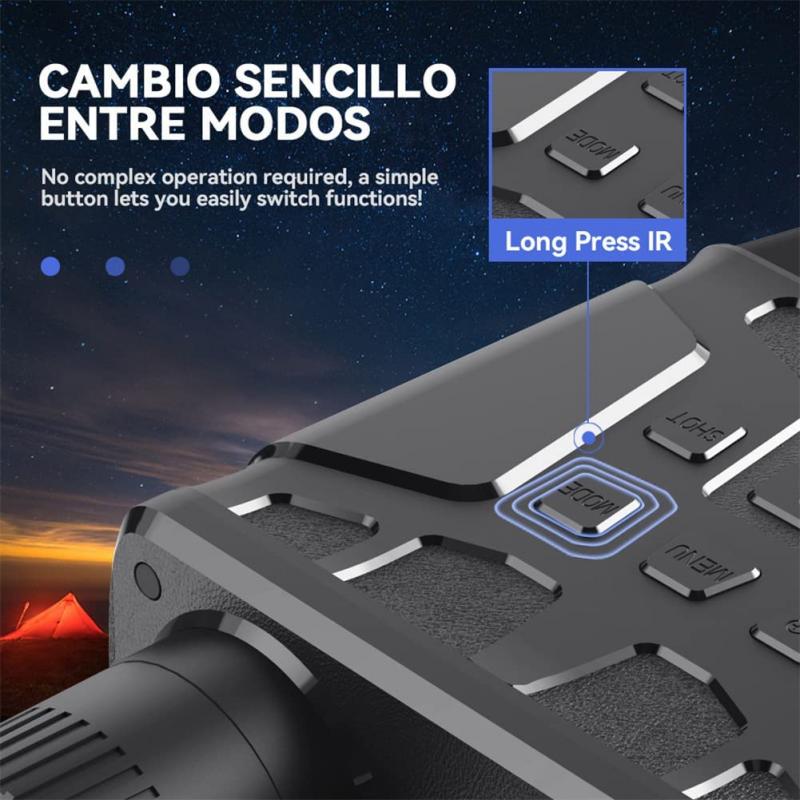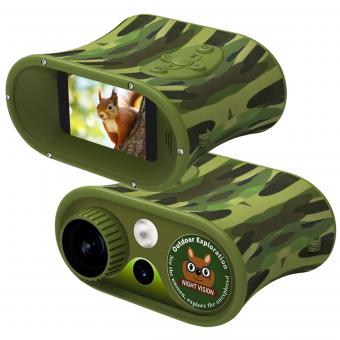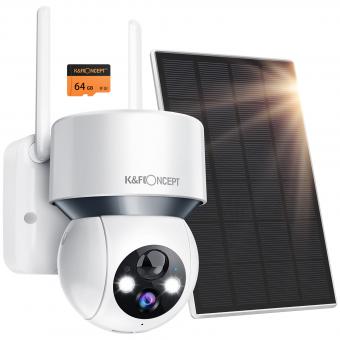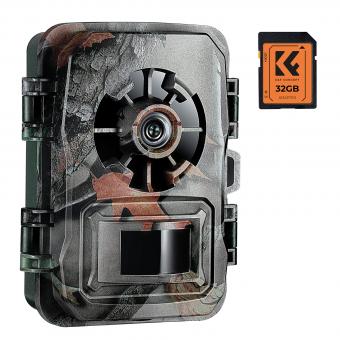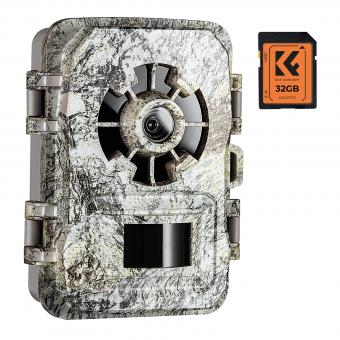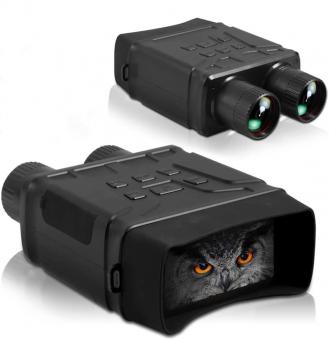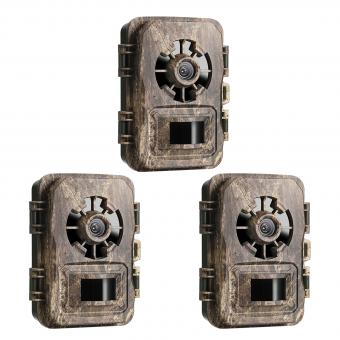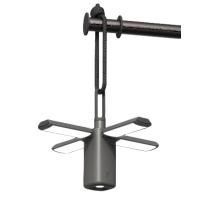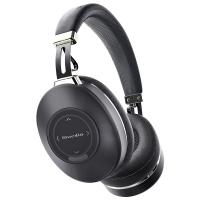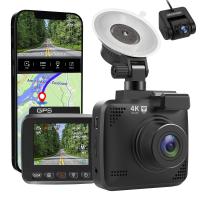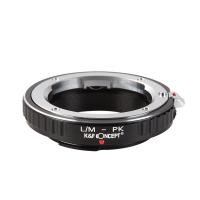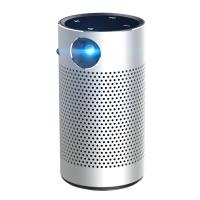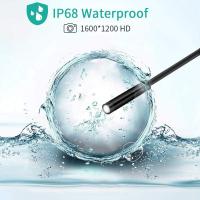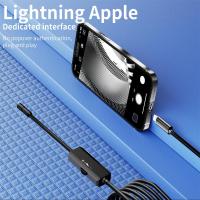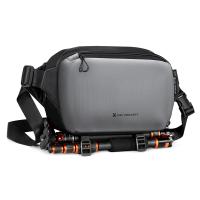How To Work Night Vision Goggles ?
Night vision goggles work by using technology that amplifies the available light in low-light or dark environments. They typically consist of an image intensifier tube, which collects and amplifies the incoming light, and a display system that presents the enhanced image to the user. The goggles may also include infrared illuminators, which emit infrared light that is invisible to the human eye but can be detected by the goggles, further enhancing visibility in complete darkness. To use night vision goggles, you would typically wear them over your eyes, adjust the focus and brightness settings as needed, and look through the eyepieces to view the amplified image. It is important to note that night vision goggles have limitations and may not provide clear vision in all conditions, such as in extremely dark or heavily obscured environments.
1、 Technology and Components of Night Vision Goggles
Night vision goggles are advanced optical devices that allow individuals to see in low-light or dark environments. They are commonly used by military personnel, law enforcement agencies, and outdoor enthusiasts. Understanding the technology and components of night vision goggles is essential to effectively operate them.
The basic principle behind night vision goggles is the amplification of available light. These devices use a combination of lenses, image intensifier tubes, and display screens to enhance the visibility of objects in the dark. The lenses gather the available light and focus it onto the image intensifier tube. The image intensifier tube then converts the photons into electrons and amplifies them. This process creates a visible image that is displayed on the screen inside the goggles.
The latest advancements in night vision technology have led to the development of digital night vision goggles. These devices use digital sensors instead of image intensifier tubes to capture and amplify light. Digital night vision goggles offer several advantages, including better image quality, increased durability, and the ability to record and transmit images.
To effectively work night vision goggles, it is important to follow these steps:
1. Familiarize yourself with the specific model of night vision goggles you are using. Read the user manual to understand its features and functions.
2. Ensure that the goggles are properly powered. Most night vision goggles use batteries, so make sure they are fully charged or have fresh batteries installed.
3. Adjust the focus of the goggles to match your eyesight. Most goggles have a focus adjustment knob or dial that allows you to achieve a clear image.
4. Use the goggles in low-light or dark environments. Night vision goggles are designed to enhance visibility in these conditions, so using them in well-lit areas may result in a washed-out image.
5. Practice using the goggles before relying on them in critical situations. Familiarize yourself with the controls and settings to ensure you can operate them effectively when needed.
Night vision goggles are powerful tools that provide enhanced vision in low-light conditions. By understanding the technology and components of these devices and following the proper operating procedures, users can maximize their effectiveness and safety in the dark.

2、 Types of Night Vision Goggles: Image Intensifier vs Thermal
Types of Night Vision Goggles: Image Intensifier vs Thermal
Night vision goggles are essential tools used in various fields, including military operations, law enforcement, and wildlife observation. They enable users to see in low-light or no-light conditions, providing a significant advantage in situations where visibility is limited. There are two main types of night vision goggles: image intensifier and thermal.
Image intensifier night vision goggles work by amplifying the available light in the environment. They capture the existing light, such as moonlight or starlight, and enhance it to create a visible image. These goggles are effective in scenarios where there is some ambient light present. However, they may struggle in completely dark environments.
On the other hand, thermal night vision goggles detect the heat emitted by objects and convert it into a visible image. They do not rely on ambient light, making them suitable for use in total darkness. Thermal goggles can detect temperature differences, allowing users to identify living beings, objects, or even hidden heat sources. This technology has advanced significantly in recent years, with improved image quality and increased range.
Both types of night vision goggles have their advantages and limitations. Image intensifier goggles provide a more detailed and recognizable image, making them useful for identification purposes. However, they may be affected by bright light sources, which can cause temporary blindness. Thermal goggles, on the other hand, are not affected by light sources and can detect hidden objects or individuals. However, they may struggle to provide fine details and can be affected by environmental factors like rain or fog.
In conclusion, the choice between image intensifier and thermal night vision goggles depends on the specific requirements of the user and the conditions in which they will be used. Both technologies have their strengths and weaknesses, and advancements continue to be made to improve their performance and usability.
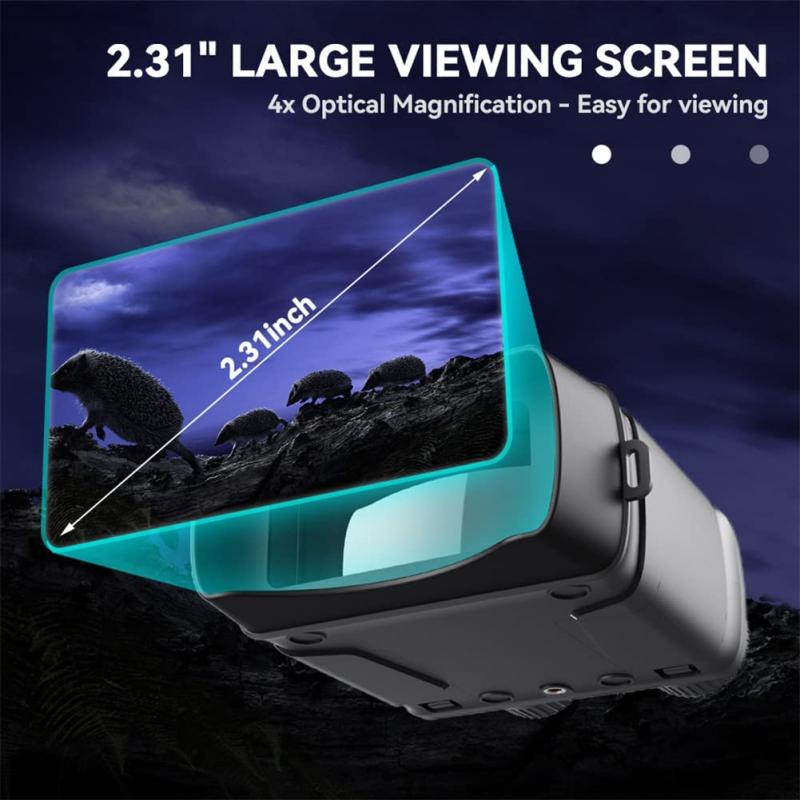
3、 Understanding Night Vision Goggle Generations
Understanding Night Vision Goggle Generations
Night vision goggles (NVGs) are optical devices that allow individuals to see in low-light or dark environments. They work by amplifying the available light, including infrared light, to provide enhanced visibility. NVGs have evolved over the years, and different generations have been developed to improve their performance and capabilities.
To understand how to work night vision goggles, it is essential to have a basic understanding of the different generations:
1. Generation 1 (Gen 1): This is the earliest and most basic form of night vision technology. Gen 1 NVGs amplify available light but may produce a grainy and distorted image. They are suitable for short-range applications and have limited performance in complete darkness.
2. Generation 2 (Gen 2): Gen 2 NVGs introduced a microchannel plate (MCP) to enhance image quality and brightness. They provide better resolution and performance in low-light conditions. Gen 2 NVGs are commonly used by law enforcement and security personnel.
3. Generation 3 (Gen 3): Gen 3 NVGs further improved image quality and sensitivity. They introduced gallium arsenide photocathodes, which increased the device's performance in extremely low-light conditions. Gen 3 NVGs are widely used by military forces and law enforcement agencies.
4. Generation 4 (Gen 4): Gen 4 NVGs are the latest development in night vision technology. They offer improved performance, extended battery life, and reduced halo effect. Gen 4 NVGs are still relatively new and primarily used by military and special operations units.
To operate night vision goggles, follow these general steps:
1. Familiarize yourself with the specific model and its features by reading the user manual.
2. Ensure the goggles are properly powered, either by batteries or an external power source.
3. Adjust the interpupillary distance to match your eyes' spacing for optimal viewing comfort.
4. Adjust the focus and gain settings to achieve a clear and bright image.
5. Use the built-in infrared illuminator when necessary to enhance visibility in complete darkness.
6. Practice using the goggles in different lighting conditions to become familiar with their capabilities and limitations.
It is important to note that the latest point of view on night vision goggles is constantly evolving as technology advances. Manufacturers are continually working to improve image quality, reduce size and weight, and enhance overall performance. Therefore, it is advisable to consult the user manual or seek updated information from reputable sources for specific instructions on operating the latest generation of night vision goggles.

4、 Proper Usage and Maintenance of Night Vision Goggles
Proper Usage and Maintenance of Night Vision Goggles
Night vision goggles are invaluable tools that enhance visibility in low-light or dark environments. Whether you are using them for military operations, hunting, or surveillance, it is essential to understand how to work and maintain these devices effectively. Here are some guidelines to ensure their proper usage and longevity.
1. Familiarize Yourself with the Controls: Before using night vision goggles, thoroughly read the user manual to understand the various controls and features. This will help you adjust settings such as brightness, focus, and magnification to suit your specific needs.
2. Proper Fitting: Ensure that the goggles are securely and comfortably fitted to your head. Adjust the straps and padding as necessary to prevent discomfort during extended use.
3. Avoid Direct Light Exposure: Night vision goggles are sensitive to bright light sources, including flashlights and car headlights. Avoid exposing the goggles to direct light, as it can damage the image intensifier tube. If necessary, use lens caps or filters to protect the device.
4. Regular Cleaning: Keep the lenses clean and free from dirt, dust, and smudges. Use a soft, lint-free cloth to gently wipe the lenses. Avoid using harsh chemicals or abrasive materials that could scratch the lens surface.
5. Battery Maintenance: Night vision goggles rely on batteries for power. Ensure that the batteries are fully charged or replaced before each use. It is also advisable to carry spare batteries in case of emergencies.
6. Storage: When not in use, store the goggles in a protective case or pouch to prevent damage. Keep them in a cool, dry place away from extreme temperatures and humidity.
7. Regular Maintenance: Periodically inspect the goggles for any signs of wear or damage. If you notice any issues, such as blurry images or malfunctioning controls, contact the manufacturer or a professional technician for repairs.
It is important to note that night vision technology is constantly evolving, and new advancements are being made. Stay updated with the latest guidelines and recommendations from the manufacturer to ensure optimal performance and safety.
In conclusion, understanding how to work and maintain night vision goggles is crucial for their proper usage and longevity. By following these guidelines, you can maximize the effectiveness of these devices and ensure they remain in good working condition for years to come.
